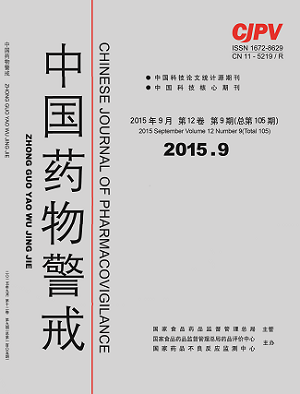|
|
Effects of Hyperbaric Oxygen on the Pharmacokinetics of Metformin Hydrochloride in Mice
SONG Jin-bo, SONG Dan-dan, SHEN Jia-Wei, ZHOU Wei-li, CHU Fei-fei, SHI Hong, SHAO Gui-qiang, CAO Xiu-qin
2015, 12(9):
522-525.
Objective To investigate the effects of hyperbaric oxygen(HBO)on the pharmacokinetics of MET. Methods Two hundred mice were randomly divided into 2 groups, the HBO group and the control group. The 2 groups of animals received gavage of MET with a single-dose of 150 mg·kg-1. The animals in the HBO group were immediately put into the hyperbaric oxygen chamber and maintained at a pressure of 0.20 MPa for a duration of 20 min. The time used for compression and decompression was both 5 min. The animals in the control group were just given a single gavage of MET. Eight animals from each group were chosen at different time points both before and after drug administration, for collection of blood samples from the eyeballs. Concentrations of MET in serum were monitored with high performance liquid chromatography, and pharmacokinetic indices were calculated accordingly. Results The main pharmaeokinetic parameters of the HBO group were as follows: Cmax(9.64±2.94)μg·mL-1, tmax(0.42±0.12)h, t1/2 (5.28±0.78)h, AUC(29.76±5.21)μg·mL-1·h, CL/F (4.94±0.65)L·h-1·kg-1, Vd (12.46±3.17)L·kg-1, while the corresponding results of the control group were Cmax (18.68±4.26)μg·mL-1, tmax (0.10±0.04)h, t1/2 (7.41±1.06)h, AUC(44.12±7.15)μg·mL-1·h, CL/F (3.32±0.63)L·h-1·kg-1, Vd (7.62±1.97)L·kg-1. Conclusion HBO could obviously accelerate the elimination of MET and seemed to have significant effect on pharmacokinetic parameters.
References |
Related Articles |
Metrics
|
